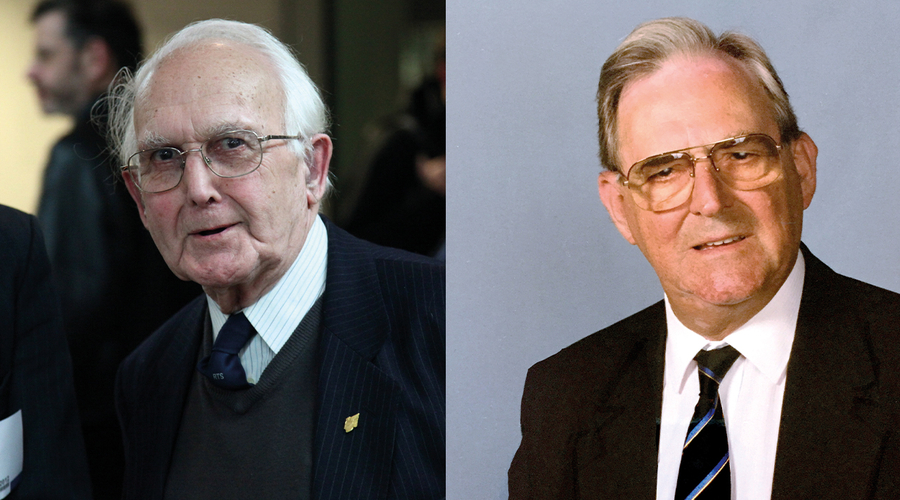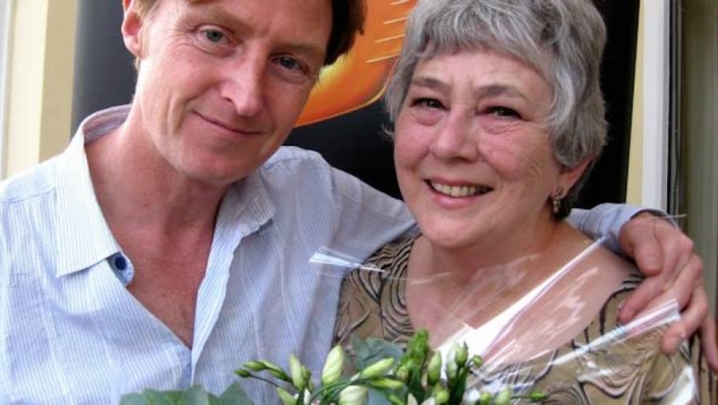Two leading lights of the London Centre – Arthur Pigott and Rick Rickards – sadly died in April. Both were made RTS Fellows in 1987, when the Society celebrated its 60th anniversary.
Arthur Pigott 1922 – 2020
Arthur Pigott joined the Society in 1972 and was heavily involved in the work of the London Centre committee. For six years, he assisted the director of the RTS Television Engineering course held at the IBA in Knightsbridge. He was made an RTS Fellow for his contribution to the RTS London Centre and the engineering course.
Arthur worked in the printing industry before serving as a radar specialist in the RAF during the Second World War. After the war he returned to printing and was responsible for the composition of the renowned photojournalism magazine Picture Post. In 1957, he moved into education and set up one of the first educational television studios. Before retirement, he was a senior lecturer at the London College of Printing. In 1997, at the Wimbledon Lawn Tennis Club during an exclusive visit granted to the London Centre, to see the new No: 1 Court and the new Broadcasting Centre Terry Marsh, Chair at this time, presented Arthur with an Award for Services to the RTS London Centre.
“Arthur was an enthusiastic supporter of the London Centre right from its very beginning and sat on the committee for many years,” recorded Norman Green, one of the founders of the
RTS London Centre."
“Arthur wrote a detailed critique of every London Centre event and when the Centre presented its awards for the ‘Best Event’ and ‘Best Chairing of a Panel’, it was Arthur's
critiques that formed the basis of the decision process."
“He was a very kind person, nothing was too much trouble for him and he was a great supporter of the RTS and the London Centre.”
Rick Rickards 1928 – 2020
‘Rick’ Rickards served on the London Centre from its inception and was Chair from 1985 to 1989 when he also served on the RTS Council. He remained an active member of the London Centre committee until 2009. He was made an RTS Fellow for his contribution to the technical advancement of television in 1987.
Ricks first job was in Avebury, Wiltshire at a local radio shop where he learnt to mend radios and television sets in the late 1940's. He then moved to R. B. Pullin in London where he worked on the design of medical diathermy equipment and in 1956 he went to EMI Broadcast Equipment division where he worked on the design of television cameras. In 1959, he joined the Engineering Department of ABC Television under the famous Howard Steele who was designing the 'mould breaking' multi-standard (405/525/625 lines) studios at Teddington. Here, Rick designed the first transistorised Video and Pulse Amplifiers and matrices which were not then available commercially for the new studio complex. He then went on to design all the transistorised video equipment, including the vision mixer, for the revolutionary ABC Television 1966 World Cup Outside Broadcast units.
Subsequently he worked on the development of specialised colour television equipment under Dr. Boris Townsend. Then, with the formation of Thames he became Head of Installation where he was responsible for the installation of the brand new Euston Studios designed for colour and the master and presentation control of the Thames Television programme output. There were months of delays in the building of the Euston Centre before the installation could begin, and it was Rick who finally got all the video systems operational after working through the night on many occasions.
Later, he became Head of Research and Development for Thames where he was heavily involved with the design of analogue and digital component video systems. He was a founder member of the ITV Code of Practice Working Party which set standards for the technical performance of ITV's studios and OB units which were much more stringent than those set by the IBA.
"Rick was very enthusiastic about having ‘engineering-based talks’ for London Centre members and was greatly involved in organising the early London Centre annual dinners. He was a person that once a decision was taken to implement something, he was relentless in delivering it" said Norman Green.


